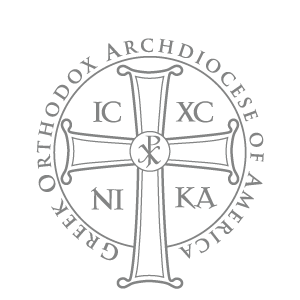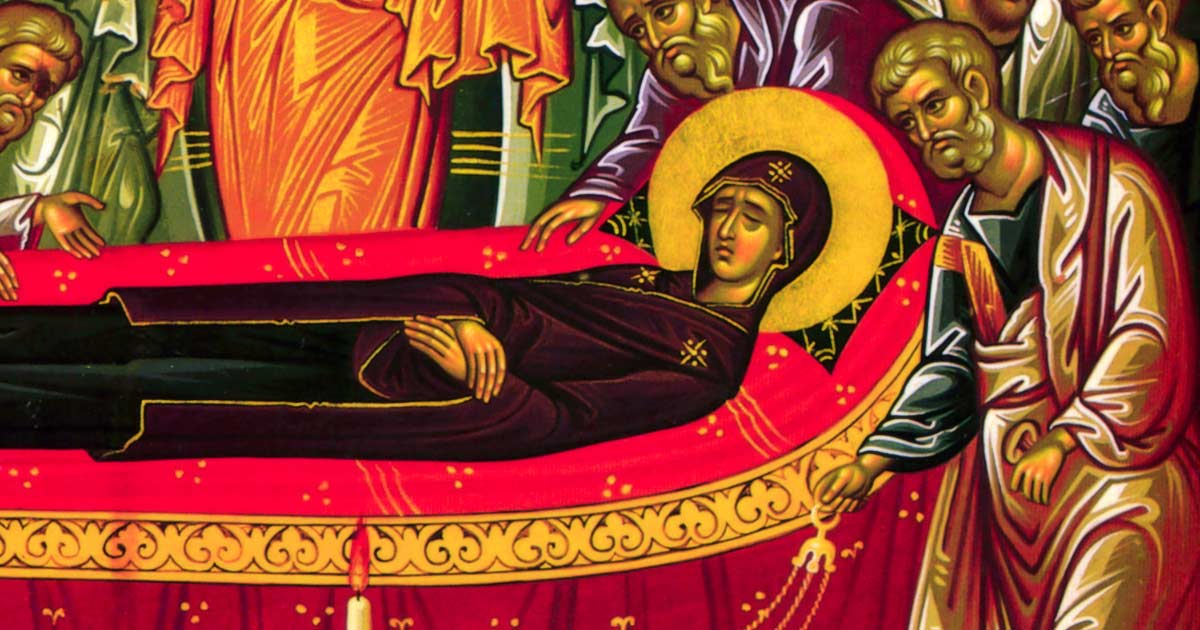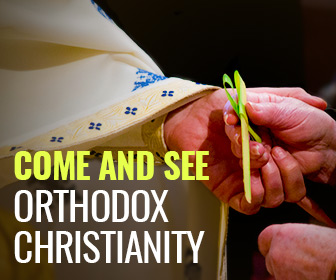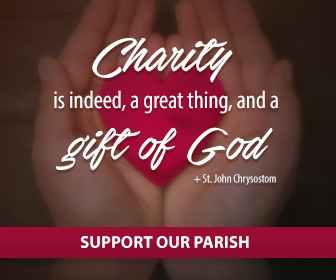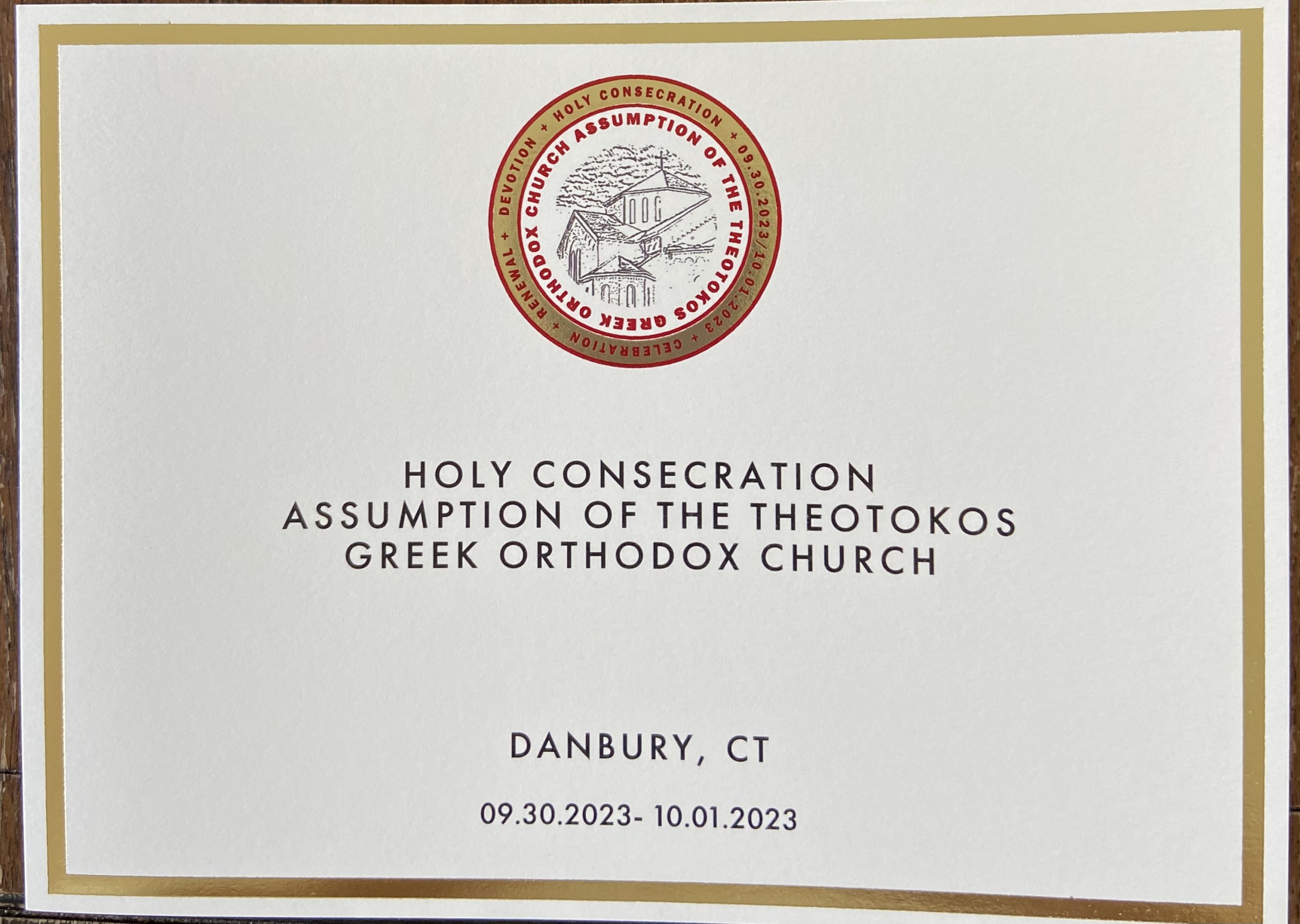
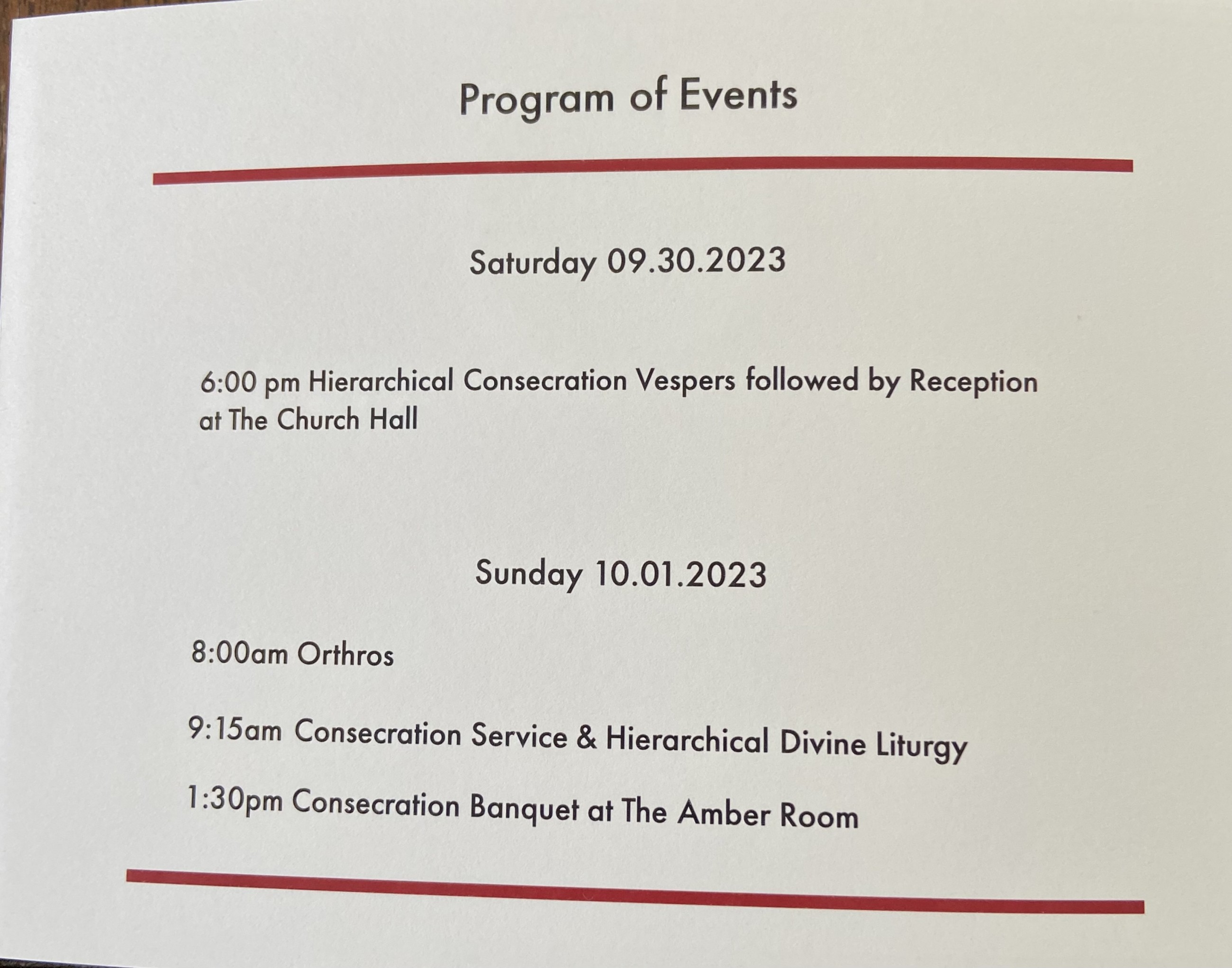
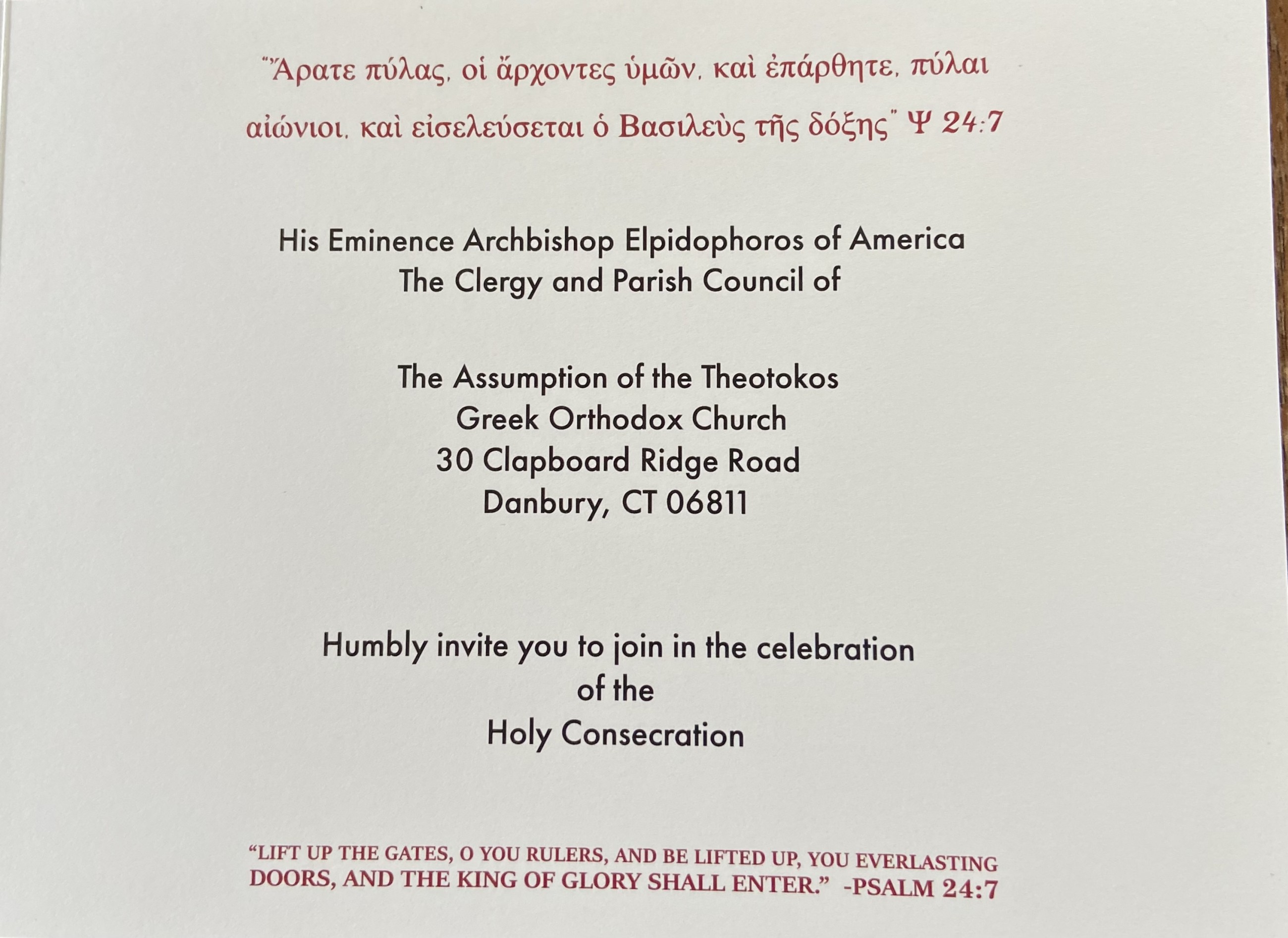
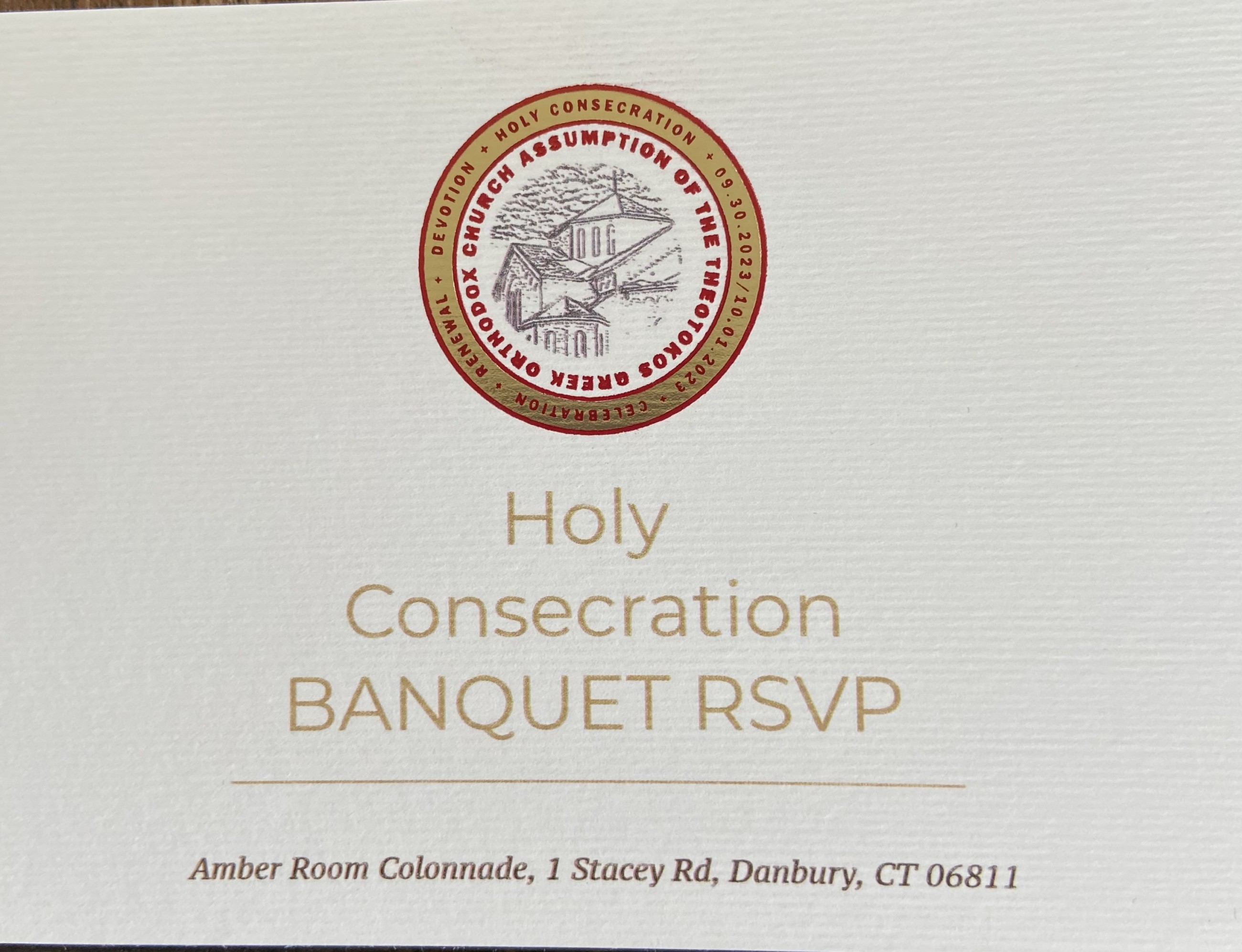
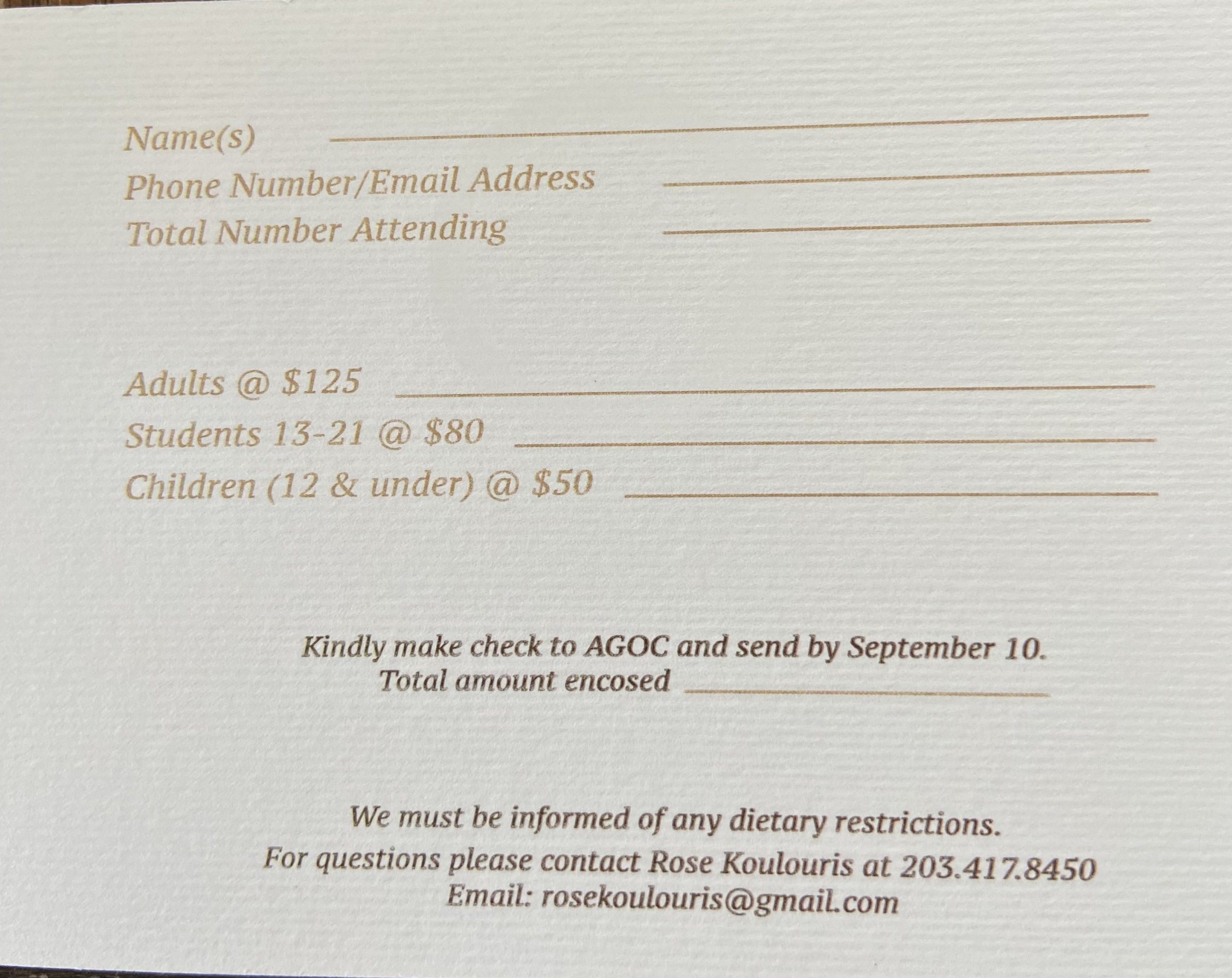
TO CONSECRATE:
❖To set apart and make holy for God’s Sacred Use
❖To devote or dedicate to God
❖To make perfect and holy
❖To renew
❖The laying on of hands
BASIS IN SCRIPTURE:
Exodus 40:9
God said to Moses, Take the anointing oil and anoint the tabernacle and everything in it:
consecrate it and all its furnishings, and it will be holy.
Romans 12:1-9
I appeal to you therefore, brothers, by the mercies of God, to present your bodies as a living sacrifice, holy and acceptable to God, which is your spiritual worship. Do not be conformed to this world, but be transformed by the renewal of your mind, that by testing you may discern what is the will of God, what is good and acceptable and perfect.
GOD CONSECRATES: PEOPLE, PLACES, THINGS
Consecrated People:
Old Testament: Moses, Solomon, Aaron
New Testament: JESUS CHRIST, Twelve Disciples, Saint Paul
Consecrated Places:
Solomon’s Temple, The Holy of Holies, Noah’s Altar, Altar of Burnt Offering, Mount Sinai, Tomb of CHRIST, The Sanctuary
Consecrated Things:
Ark of the Covenant, Aaron’s Rod, Moses’ Staff, Cross of CHRIST, Relics of our Saints, Holy Utensils, Body and Blood of Christ in the Divine Liturgy
What will GOD Consecrate on October 1?
Assumption Church: The Church Structure, the Sanctuary, the ALTAR TABLE, the ICONS, THE LAOS, ‘the People’: Consecrated people are individuals who are made perfect, new or renewed, when they dedicate themselves to be set apart for God’s sacred use.
Why now?
2023 coincides with our 85th year as a chartered parish of the Greek Orthodox Archdiocese of America. In addition, this year marks the 40th anniversary of Assumption Church at its Clapboard Ridge location. In 2018, a custom Holy Altar table was installed in anticipation of this most sacred moment in the life of our parish
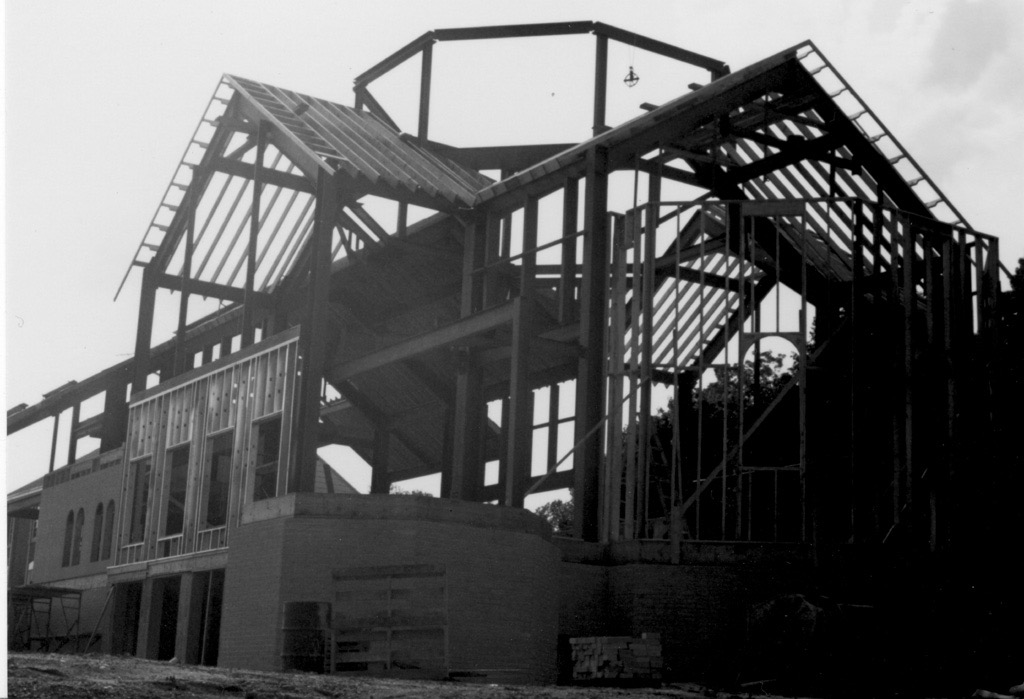
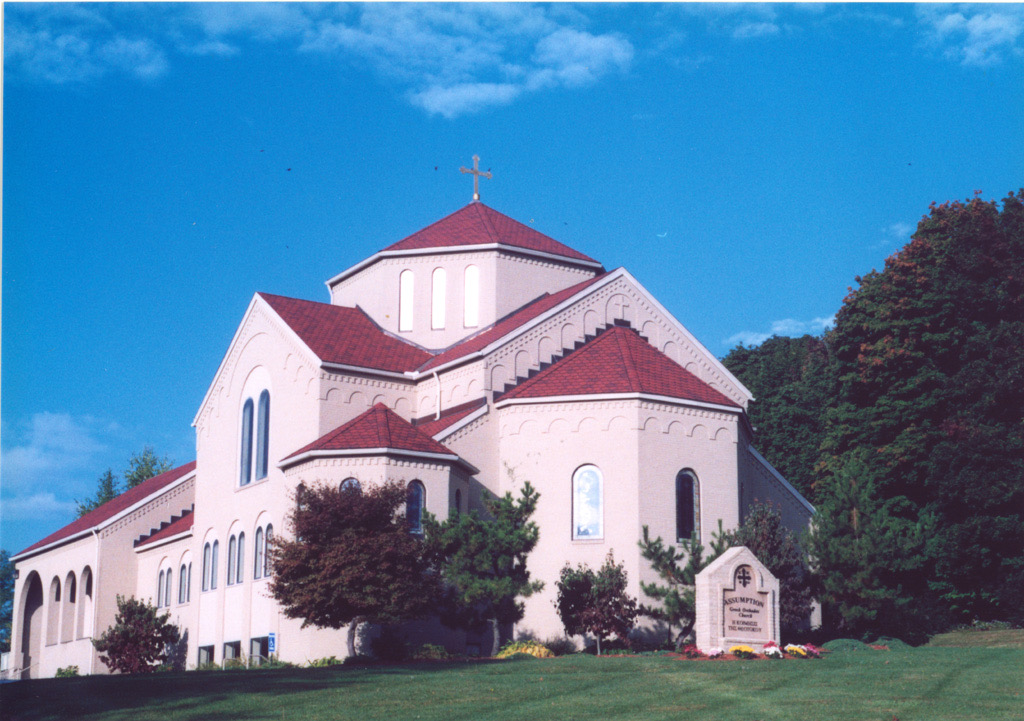
When is the Consecration?
Saturday and Sunday, Sept. 30-Oct. 1, 2023
CONSECRATION SCHEDULE:
Saturday, September 30
❖Arrival of the Holy Relics & Great Vespers / 6:00pm
❖Vespers Reception / 7:30pm in Church Hall
Sunday, October 1
❖Orthros / 8:00am
❖Consecration Service / 9:15am followed by Hierarchical Divine Liturgy
❖Reception at The Amber Room / 1:30pm
What is the Consecration and why does it take place?
For an Orthodox Christian salvation is union with Christ. This union with Christ is called the "Life in Christ". The center of this "Life in Christ" is the Holy Altar, as well as the services which are related to it, i.e., the Seven Sacraments. Because the Holy Altar is so important in the life of an Orthodox Christian, the service of Consecration centers around the Holy Altar Table. In simple terms the Consecration Service is the Baptism and Chrismation of the Church.
Who are the clergy that will officiate?
His Eminence Archbishop Elpidophoros of America, one or two additional hierarchs including Bishop Andonios of Phasiane, Archdeacon Dionysios, an additional deacon, Fr. Peter Karloutsos, Fr. Paul Kaplanis & Fr. Nikolas Karloutsos and other visiting clergy to be determined.
How does the Church prepare for the Consecration?
Before the Consecration Service begins, all Articles on the Altar Table are removed, and the Altar is left uncovered with nothing on it. A cavity is created in the altar table to house the relics of the three Saints. When the Archbishop enters the Church he will bring with him the relics of those Saints. These relics will be placed on a Paten (Diskarion), which will remain on the Altar Table overnight, together with a Vigil Light.
Who are the three Saints whose relics will be sealed in the altar table?
Saint Panteleimon, Saint Haralambos, and Saint Barbara.

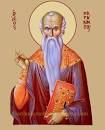

What do those three Saints represent?
An adult male, a priest martyr, and adult female saints.
When does the service start?
The Consecration of the Church begins on the Eve of the celebration with a short Prayer Service honoring the memory of Martyrs. The Vespers, a very joyous celebration follows, and many Priests participate in it to share in the joy of the coming event. On Sunday Morning the order of services is: Matins (Morning Prayer), the Consecration Service and the first Divine Liturgy in the newly consecrated Church.
What does the Sunday morning service consist of?
The service begins with the Matins, the Matins is a morning service held prior to the Divine Liturgy. It begins with the reading of the six Psalms (3, 37, 62, 87,102,142) and ends with the Great Doxology. During Matins resurrection and consecration hymns are sung. The Priest will also celebrate part of the Proskomidi Service (preparing the Gifts which will be used during the Divine Liturgy). At the appointed time Archbishop Elpidophoros will enter the Church and will put on his vestments (Ceremonial Robes). At the end of Matins the Archbishop will begin the Service of Consecration.
What exactly happens during the Service of Consecration?
The Consecration is a special service which "changes" an ordinary building into the House of God. This change takes place through the Grace of God and the Holy Spirit. Many symbolic actions take place such as:
1. The Three Processions around the Church Building.
2. The Placing of, and Sealing of, the Holy Relics in the Altar Table.
3. The Washing and Anointing of the Altar Table.
4. The Placing of the new Altar Coverings and other Holy Articles on the Holy Table.
5. The Lighting of the Vigil Light.
1. The Archbishop and Clergy together with all the Faithful prepare for the Three Processions around the Church. The Three Processions represent the setting aside of an area which will be separate and sacred from all other areas. The Archbishop raises the covered Paten on which the Holy Relics were placed, and prepares to leave the Church. The procession is led by the Altar Boys, followed by the Choir and Cantors, the Priests, the Bishop carrying the Relics, and the Faithful, leaving the Church empty.
The Consecration is an old honored custom, and a good one. It is however proper to honor new churches through the consecration as an island dedicated to God. As Isaiah says: we have acquired these sites from the congregation of the gentiles, and established them as churches on the solid foundation of God's Name. This is why we are celebrating this Consecration in a spiritual manner.
When the procession reaches the front of the Church, the Bishop places the Holy Relics on a table, which has been previously placed there, and readings from the Bible follow. Once again, the Archbishop picks up the Paten, and the second procession around the Church takes place, while the Choir sings Special Hymns, or "Holy God, Holy mighty..." When the procession reaches the front doors of the Church, the Relics are again placed on the table, and readings from the Bible follow.
The Archbishop picks up the Paten with the Holy Relics, and the final procession takes place. The Choir continues to sing Special Hymns or "Holy God, Holy mighty..." At the end of the third procession the Archbishop places the Paten on the table and recites a prayer.
The Archbishop standing in front of the Doors of the Church, begins a short dialogue. The words of his conversation are taken from Psalm 24. This act represents Christ the King entering and taking over the Church building by defeating the power of the devil. The Archbishop taps on the door 4 times with his staff and says: “Open, Open the gates and let them remain open forever and let the King of glory enter.” The priest inside the Church, who represents an Angel, is surprised to hear this command, and asks: “Who is this King of Glory?” The Archbishop replies: The Lord strong and mighty, the Lord mighty in battle, the Lord of hosts, He is the King of glory. (This dialogue is repeated 3 times.)
Having said this, the Archbishop raises the Paten and makes the sign of the Cross before the Church doors. The doors are then unlocked and the Archbishop enters the Church carrying the Holy Relics followed by all the clergy and the congregation. The faithful light candles, venerate the Holy Icons in the Narthex, and return to their seats.
2. The Archbishop enters the Sanctuary, carrying the Paten with the Holy Relics. Uncovering the Paten, he places the Holy Relics in a small gold box. He then pours Holy Chrism (myrrh) over the Relics; this act symbolizes the union between our Lord, and His Martyrs. Having done this the Archbishop prays for the founders of the Church -- all parishioners who have fallen asleep (died).
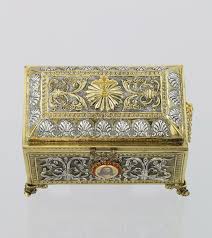
In the early years of Christianity, the Church was not allowed to exist; for many years the early Christians were persecuted and killed for their faith in Christ. In those days, the Christians met in underground burial places and celebrated the Eucharist on the graves of the martyred Saints.
When the persecutions ended, and the Church was allowed to exist, the custom of celebrating the Eucharist over the graves of Martyrs continued by placing Holy Relics in the Altar at the time of the Consecration. In this manner, we are always reminded that the Church was built on the Blood of the Martyrs and their faith in the Lord.
Since the Consecration centers around the Holy Altar Table (for it represents the center of all Sacraments and services of the Church), the Archbishop prays and asks for God's help to accomplish the service.
Following these prayers, the Archbishop places the gold box containing the Holy Relics into a special cavity in the altar. In order to seal them permanently the Archbishop pours wax/mastic over them. The wax/mastic contains many sweet smelling and fragrant spices, which were used by Joseph of Arimathea and Nicodemus to anoint the Body of Christ in preparation for burial. The Holy Altar represents the Tomb in which our Lord's body was placed. All of this takes place during the reading of Psalm 145.
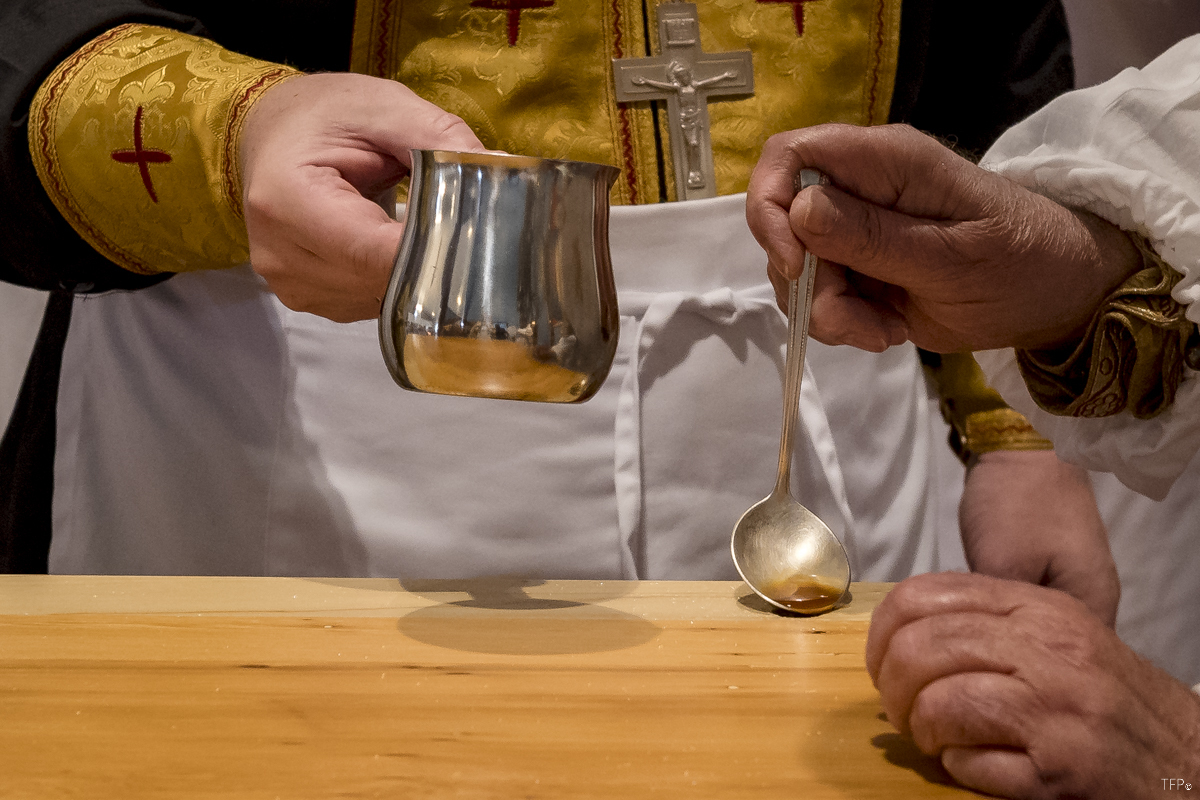
As the Archbishop removes the excess wax/mastic, Psalm 23 is read. The Deposition (placing of the Holy Relics in the Altar Table) is now completed, and the Archbishop prepares to wash and anoint the Altar Table.
3. Since the Altar Table represents the Tomb of Christ and His body lies therein, the Altar must undergo its own "Baptism" (washing) and "Chrismation" (anointing). Before washing and anointing the Altar Table, the Archbishop puts on a white linen garment called the Savanon. While the faithful kneel, the Archbishop reads the prayer of Consecration.
A basin of water is then brought to the Archbishop who blesses and prays for its sanctification. The Archbishop then pours water on the Altar three times saying: "In the name of the Father, Son, and Holy Spirit", and washes the Altar Table while Psalm 84 is read. This act symbolizes Baptism: The Altar is cleaned by washing, and sanctified (made Holy) by the Grace of the Holy Spirit. After washing, the Altar is then dried.
The Archbishop then sprinkles Rosewater on the Altar Table (Rosewater is a sweet smelling fragrance which was used to anoint the Body of Christ for burial. The Archbishop continues the rest of Psalm 51 while the Altar Table is wiped dry by the assisting Priests.)
The Archbishop anoints the Holy Altar with Holy Chrism (once in the center and then on either side) while he sings: "Alleluia, Alleluia, Alleluia". He spreads the Holy Chrism over the entire Altar Table as he recites a section from Psalm 133.
The Priests then wipe the excess Chrism with the Antimens (a rectangular piece of cloth, of linen or silk, with representations of the entombment of Christ, the four Evangelists, and scriptural passages related to the Eucharist).
St. Symeon, in writing about the anointing of the Altar Table, says the following: "Since the Altar is anointed with the Holy Chrism, which represents the gift of the Holy Spirit, the Altar Table then becomes a source of Grace to all people through the Sacraments which are celebrated thereon. The Holy Gospel is placed on the Altar, the Holy Relics are within, so we see that the Altar becomes the Altar of Christ, a throne of Glory, the dwelling place of God, and the Tomb of Christ."
Next, icons of the four Evangelists are fastened to the Altar (one in each corner). The completed Altar represents the entire Church, which from the four corners of the world is held together by the Lord, and is built on Him through the preaching of the Gospel. Following the Anointing, the Bishop begins the vesting (putting on the new coverings) of the Altar Table.
4. The Altar Table is now covered with the "Katasarkion". This white linen cloth represents the Lord's burial shroud. The Katasarkion is tied with a cord which represents the cord with which our Lord's hands were tied as He stood before the High Priests. The Katasarkion will never be removed and will remain on the Altar for as long as the Church remains standing. As the Katasarkion is being placed on the Altar, Psalm 132 is read by the psalti. Having placed the Katasarkion over the Altar, the Archbishop says: "Glory to You our God unto Ages of Ages.” He washes his hands, and covers the Altar Table with a brighter and more elaborate cover which symbolizes the Glory of God. While he covers the Altar Table, the reader reads Psalm 93.
The Archbishop proceeds to place the other Holy Articles on the Altar Table. First, he places the Antimens; on top of this is placed the Gospel Book (representing the teachings of Christ.) The Artoforion, in which the Body and Blood of our Lord is placed, and is reserved for Communion of the sick. The Artoforion is symbolic of the presence of our Lord. The candlesticks which are placed last represent the Light of Christ that shines forth during the Sacred Services. Since the Altar has been consecrated, sanctified and adorned with all its furnishings, the Altar and the entire Church is now censed with incense while Psalm 26 is read.
5. The Archbishop then anoints the four walls of the Church and the Holy Icons making the sign of the Cross on them with Holy Chrism. This act symbolizes the sanctification of all creation with the Grace of Christ. During the service, the Archbishop will invite ministry leaders to offer pours of oil in a Vigil Light. This they do as an offering to the Church. The Archbishop will later light the Vigil Light and will place it on the Altar Table near the Artoforion. This light will be kept burning at all times and is symbolic of the never-failing light of Christ which came into darkness of the world to be a light to enlighten all people.
The Archbishop then removes the Savanon. The Savanon will be cut up into small pieces and each person in Church will receive a piece of it to keep as a "Phylacton" (blessed keepsake of the Consecration).
How can I help?
The Consecration of Assumption Church is an ambitious effort and a “once-in-a-lifetime” event that will require every parishioner to make the best gift they possibly can.
Who should I contact for more information/questions?
Fr. Nikolas – Frnikolas@agoc.us
Fr. Peter – Frpeter@agoc.us
Church Office – office@agoc.us
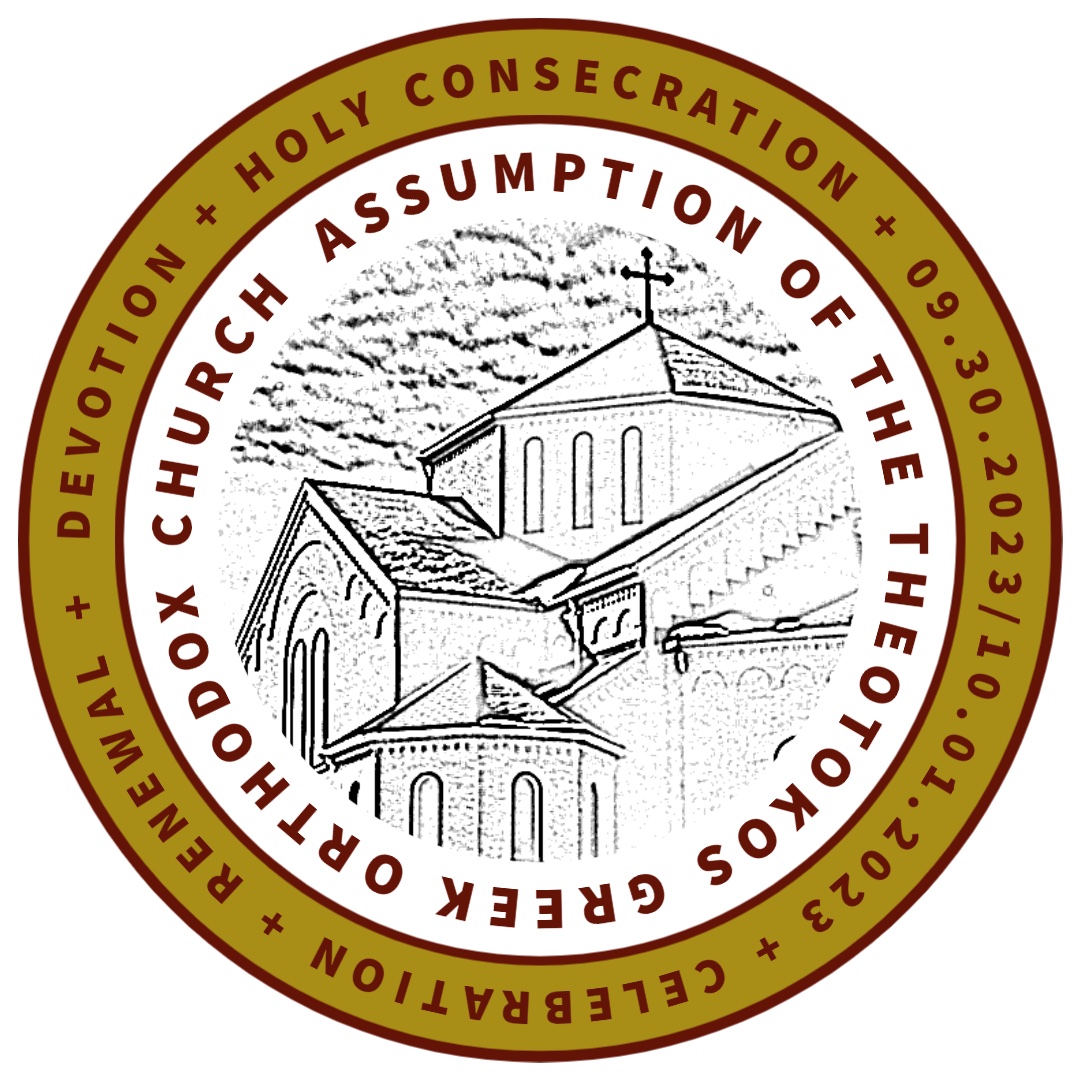
GLOSSARY
ANGELS: Pure spirits created by God, to serve and praise Him.
ALTAR: A term used to designate the Sanctuary, the area behind the Icon screen.
ALTAR TABLE: The table on which the Holy Liturgy is celebrated. On it are found the Gospel Book, Cross, Antimens (Antimension), and the Artoforion. The Altar Table contains relics of the
Saints which are placed within it at the time of the Church's Consecration.
ALTAR CLOTH: A bright and usually elaborate cloth placed over the Altar Table. It is symbolic of the Glory of God since the Altar represents the Throne of God.
ANOINTING: The act of tracing a mark in the form of cross, with Holy Oil on a person or a thing in a Church ceremony.
ANTIMENS: (Antimension) The word means "in place of a table". The Antimens is a piece of cloth on which Christ's Burial is depicted and into which Relics are sewn. The Divine Liturgy is always celebrated on the Antimens.
ARTOFORION: A receptacle on the Altar Table, in which the Holy Sacraments are placed before conveyance to the sick.
BENEDICTION: The blessing offered by the Bishop or Priest at certain times in the services of The Church.
CELEBRANT: Person who celebrates the Holy Eucharist (bishop or priest).
CENSER: The vessel in which incense is burned.
HOLY CHRISM: Holy Oil which contains many fragrant ingredients. It is mixed and blessed by our Patriarch, together with a group of bishops, on Holy Thursday and distributed to all churches in his care.
CORPORAL: (Eliton) A cloth similar to the Antimens, but without relics sewn inside. The Corporal may not be used as an Altar Table.
EPISTLE: A portion of the New Testament Scriptures read before the Gospel reading.
DEPOSITION: The Act of placing the Holy Relics into the Holy Altar Table during the Consecration of the Church.
EVANGELISTS: "The bringers of good tidings". The four writers of the Gospels, Matthew, Mark, Luke and John.
EUCHARIST: Another name for the Divine Liturgy. The Sacrament at which bread and wine become the Body and Blood of Christ. The word Eucharist means "thanksgiving".
GOSPEL: The "Good News", a record of the life and teachings of Jesus. The Book of the Gospels is placed on the Holy Altar Table and is usually ornate, with a gold or silver cover.
ICONS: Holy pictures representing holy persons and or an event in the life of Christ. Icons are Found not only in the Church, but believers place them in their homes. An Orthodox has an attitude of reverence and respect for all icons.
ICONSTASION: Icon screen, the wall which separates the Sanctuary from the Nave of the Church building. On it are found the Icons of the Saviour, the Virgin Mary, St. John the Baptist, and the Patron Saint of the Church.
KATASARKION: A white linen cloth which covers the Altar Table. It is symbolic of the shroud in which our Lord's body was wrapped for burial.
MARTYR: A person who suffered and died for the Christian faith.
MASTIC: A yellowish resin used in making incense. The mastic is mixed with wax, myrrh, aloe, incense and labdanum. This mixture is used to seal the Holy Relics in the Altar Table.
MATINS: The morning service which is held prior to the Divine Liturgy. It begins with the reading of the Six Psalms and ends with the Great Doxology.
MYRRH: Is another name for the Holy Chrism.
ORTHROS: The morning service usually called Matins.
PATEN: A round, flat plate of gold or silver on which parts of the Prosforo (bread) which are to be consecrated are placed for the celebration of Liturgy.
PATRON SAINT: A Saint chosen by a Church, a nation, or any religious organization as a special guardian and protector.
RELICS: The bodies of Saints, or particles of their bodies, which the Church venerates because of their holiness. Relics of three Saints are placed in the Altar at the time of the Consecration.

SAVANON: A white linen garment worn by the celebrant Bishop at a Consecration. The Savanon is put on prior to the washing of the Altar Table. Following the Consecration, the Savanon is cut into small pieces and given to the people as a "Phylacton" (blessed keepsake of the Consecration).
VENERATION: The honor and reverence that Orthodox pay to the Saints, the Virgin Mary and to icons.
VESPERS: The evening service begins with the reading of Psalm 104. On special feast days, the Artoklasia is held during the Vespers Service.
VIGIL LIGHT: A light burning in a glass holder. Usually found before Icons or in front of or on either side of the Artoforion.
